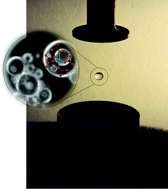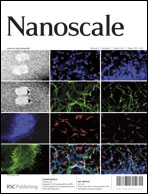Carbonate-coordinated metal complexes precede the formation of liquid amorphous mineral emulsions of divalent metal carbonates†
Abstract
During the mineralisation of metal carbonates MCO3 (M = Ca, Sr, Ba, Mn, Cd, Pb) liquid-like amorphous intermediates emerge. These intermediates that form via a liquid/liquid phase separation behave like a classical emulsion and are stabilized electrostatically. The occurrence of these intermediates is attributed to the formation of highly hydrated networks whose stability is mainly based on weak interactions and the variability of the metal-containing pre-critical clusters. Their existence and compositional freedom are evidenced by electrospray ionization mass spectrometry (ESI-MS). Liquid intermediates in non-classical crystallisation pathways seem to be more common than assumed.


 Please wait while we load your content...
Please wait while we load your content...